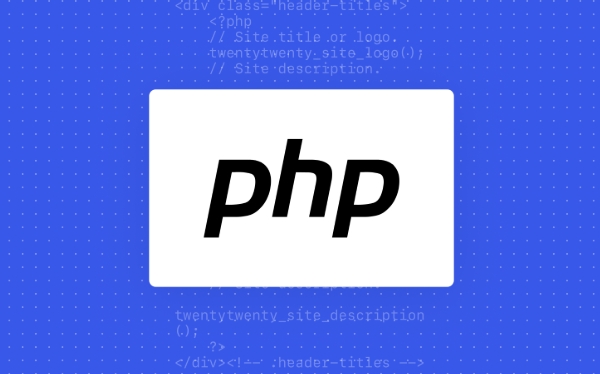The main reasons for header jump failure include early output triggering, variable splicing errors and path configuration problems. 1. Output triggers in advance: Check whether there are echo/print/var_dump or file to introduce empty lines, and use ob_start() to buffer the output; 2. Variable splicing errors: Make sure that the variable has values ??and is formatted correctly, encode parameters with urlencode and print the verification URL; 3. Path or server problems: Confirm the path is correct and the domain name protocol matches, check the .htaccess/Nginx rewrite rules, manually test the URL access permissions and add exit termination script.

Sometimes when using PHP's header('Location: ...') to jump to the page, if the URL contains a variable, the jump does not take effect, or even an error is reported, this is quite common. The main reasons may be that the output is triggered in advance, the path is wrong, or the variable splicing method is incorrect.

The output has been sent, causing the header to fail
This is one of the most common problems. header() function of PHP must be called before anything is output. Even if there is a space, echo or HTML output in front of it, the header setting will fail and an error similar to "headers already sent" will be prompted.
Solution:

- Check whether there are any output statements such as
echo,print,var_dump, etc. beforeheader() - Check if other files (such as config.php) are introduced, which may have empty lines or output
- Use
ob_start()to enable output buffering and delay output content
<?php
ob_start();
// Your logical code header("Location: target.php?id=123");
exit;
?>Incorrect splicing method
If you are splicing URLs through variables, for example:
$id = 123;
header("Location: target.php?id=$id"); This writing method itself is fine, but make sure that the variable has values ??and that the spliced ??URL is in the correct format. For example, $id is empty, null or non-number, which may cause incomplete or errors in the jump address.

Suggested practices:
- Print the final URL before jumping to confirm whether the splicing result is correct
$url = "target.php?id=" . urlencode($id);
// echo $url; // For test, comment out the header("Location: $url");
exit;- Use
urlencode()to encode parameters to avoid problems caused by special characters
Path or server configuration issues
Sometimes the URL to be redirected is written incorrectly, such as the relative path is incorrect, or the absolute path is used but the domain name is written incorrectly, which can also cause the redirect to fail or jump to the error page.
Common Situations:
- The path is written as
redirect.php?..., but the actual file name isredirects.php -
http://was used but the server forced HTTPS, resulting in redirect failure - The URL rewrite of
.htaccessor Nginx configuration affects the jump target
Recommended inspection:
- Print the complete jump URL, copy and paste manually to the browser to see if it can be opened normally
- If deployed on a virtual host, confirm whether you have permission to perform header redirection
- Make sure to use
exit;ordie();to terminate subsequent execution of the script
Summarize
When header location fails to jump with variables, first check whether there is any output in advance, then check whether the variable splicing is correct, and finally confirm the jump path and server settings. These issues are relatively basic, but are easy to ignore. Basically, that's all, you can find the reason by typing a few more logs during debugging.
The above is the detailed content of PHP header location with variables not working. For more information, please follow other related articles on the PHP Chinese website!

Hot AI Tools

Undress AI Tool
Undress images for free

Undresser.AI Undress
AI-powered app for creating realistic nude photos

AI Clothes Remover
Online AI tool for removing clothes from photos.

Clothoff.io
AI clothes remover

Video Face Swap
Swap faces in any video effortlessly with our completely free AI face swap tool!

Hot Article

Hot Tools

Notepad++7.3.1
Easy-to-use and free code editor

SublimeText3 Chinese version
Chinese version, very easy to use

Zend Studio 13.0.1
Powerful PHP integrated development environment

Dreamweaver CS6
Visual web development tools

SublimeText3 Mac version
God-level code editing software (SublimeText3)

Hot Topics
 How do I stay up-to-date with the latest PHP developments and best practices?
Jun 23, 2025 am 12:56 AM
How do I stay up-to-date with the latest PHP developments and best practices?
Jun 23, 2025 am 12:56 AM
TostaycurrentwithPHPdevelopmentsandbestpractices,followkeynewssourceslikePHP.netandPHPWeekly,engagewithcommunitiesonforumsandconferences,keeptoolingupdatedandgraduallyadoptnewfeatures,andreadorcontributetoopensourceprojects.First,followreliablesource
 What is PHP, and why is it used for web development?
Jun 23, 2025 am 12:55 AM
What is PHP, and why is it used for web development?
Jun 23, 2025 am 12:55 AM
PHPbecamepopularforwebdevelopmentduetoitseaseoflearning,seamlessintegrationwithHTML,widespreadhostingsupport,andalargeecosystemincludingframeworkslikeLaravelandCMSplatformslikeWordPress.Itexcelsinhandlingformsubmissions,managingusersessions,interacti
 How to set PHP time zone?
Jun 25, 2025 am 01:00 AM
How to set PHP time zone?
Jun 25, 2025 am 01:00 AM
TosettherighttimezoneinPHP,usedate_default_timezone_set()functionatthestartofyourscriptwithavalididentifiersuchas'America/New_York'.1.Usedate_default_timezone_set()beforeanydate/timefunctions.2.Alternatively,configurethephp.inifilebysettingdate.timez
 How do I validate user input in PHP to ensure it meets certain criteria?
Jun 22, 2025 am 01:00 AM
How do I validate user input in PHP to ensure it meets certain criteria?
Jun 22, 2025 am 01:00 AM
TovalidateuserinputinPHP,usebuilt-invalidationfunctionslikefilter_var()andfilter_input(),applyregularexpressionsforcustomformatssuchasusernamesorphonenumbers,checkdatatypesfornumericvalueslikeageorprice,setlengthlimitsandtrimwhitespacetopreventlayout
 What is data serialization in PHP (serialize(), unserialize())?
Jun 22, 2025 am 01:03 AM
What is data serialization in PHP (serialize(), unserialize())?
Jun 22, 2025 am 01:03 AM
ThePhpfunctionSerialize () andunserialize () AreusedtoconvertcomplexdaTastructdestoresintostoraSandaBackagain.1.Serialize () c OnvertsdatalikecarraysorobjectsraystringcontainingTypeandstructureinformation.2.unserialize () Reconstruct theoriginalatataprom
 How do I embed PHP code in an HTML file?
Jun 22, 2025 am 01:00 AM
How do I embed PHP code in an HTML file?
Jun 22, 2025 am 01:00 AM
You can embed PHP code into HTML files, but make sure that the file has an extension of .php so that the server can parse it correctly. Use standard tags to wrap PHP code, insert dynamic content anywhere in HTML. In addition, you can switch PHP and HTML multiple times in the same file to realize dynamic functions such as conditional rendering. Be sure to pay attention to the server configuration and syntax correctness to avoid problems caused by short labels, quotation mark errors or omitted end labels.
 What are the best practices for writing clean and maintainable PHP code?
Jun 24, 2025 am 12:53 AM
What are the best practices for writing clean and maintainable PHP code?
Jun 24, 2025 am 12:53 AM
The key to writing clean and easy-to-maintain PHP code lies in clear naming, following standards, reasonable structure, making good use of comments and testability. 1. Use clear variables, functions and class names, such as $userData and calculateTotalPrice(); 2. Follow the PSR-12 standard unified code style; 3. Split the code structure according to responsibilities, and organize it using MVC or Laravel-style catalogs; 4. Avoid noodles-style code and split the logic into small functions with a single responsibility; 5. Add comments at key points and write interface documents to clarify parameters, return values ??and exceptions; 6. Improve testability, adopt dependency injection, reduce global state and static methods. These practices improve code quality, collaboration efficiency and post-maintenance ease.
 How do I execute SQL queries using PHP?
Jun 24, 2025 am 12:54 AM
How do I execute SQL queries using PHP?
Jun 24, 2025 am 12:54 AM
Yes,youcanrunSQLqueriesusingPHP,andtheprocessinvolveschoosingadatabaseextension,connectingtothedatabase,executingqueriessafely,andclosingconnectionswhendone.Todothis,firstchoosebetweenMySQLiorPDO,withPDObeingmoreflexibleduetosupportingmultipledatabas






